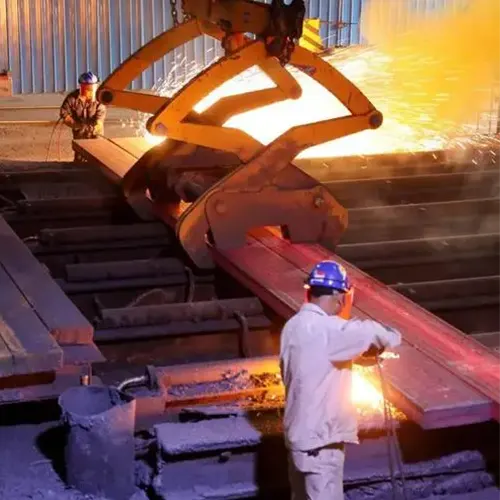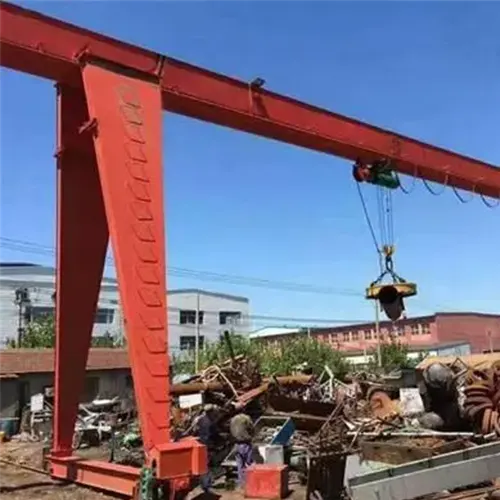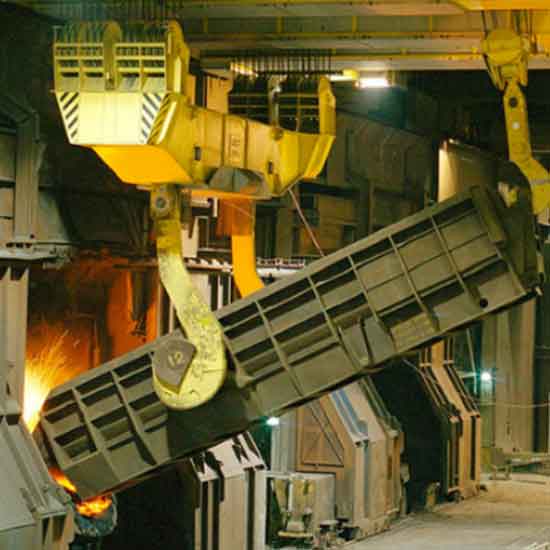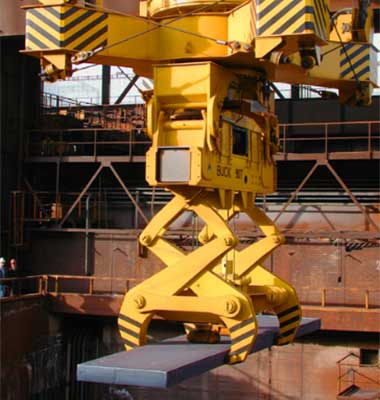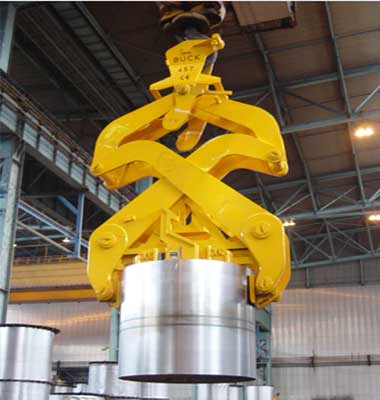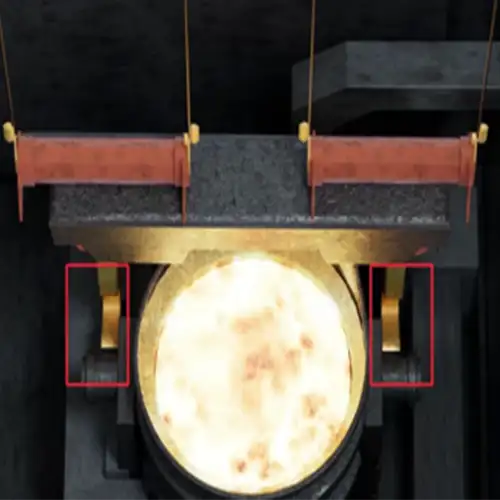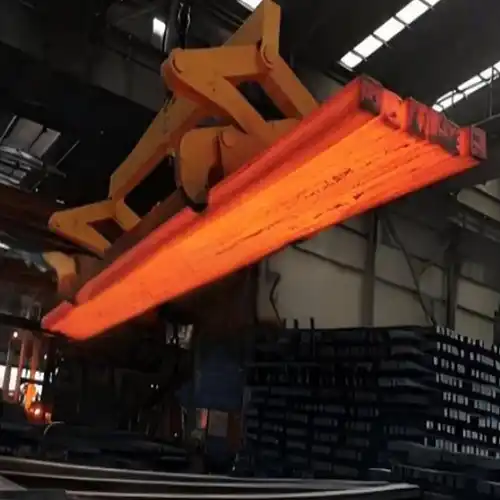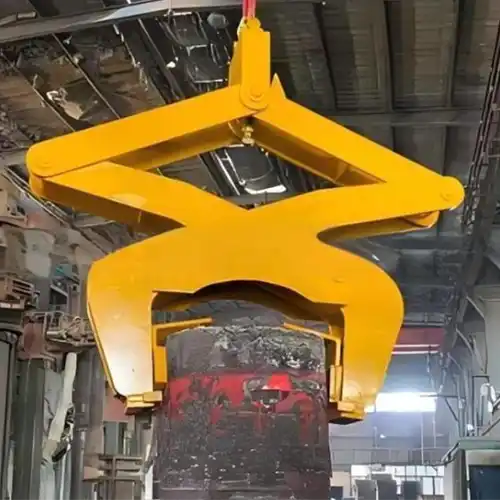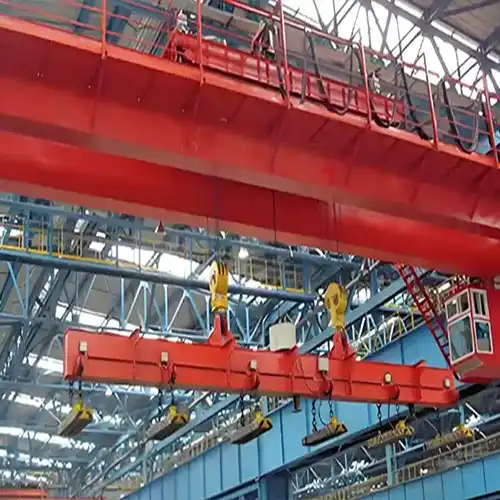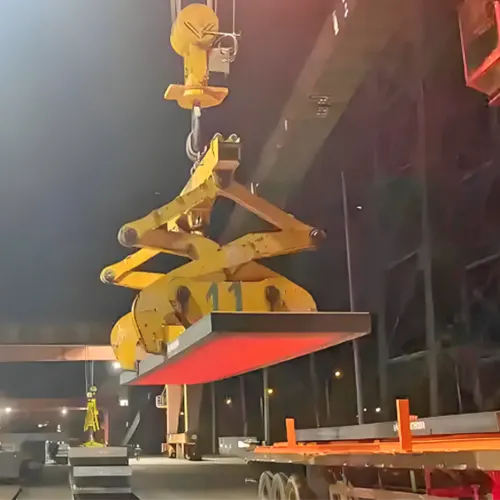Cost-effective Overhead Cranes in Brazilian Steel Manufacturing
Overhead cranes for sale in Brazilian steel mills offer efficient, robust lifting solutions crucial for heavy material handling and production processes.
Category: Brazil
Your Trusted Overhead Crane Manufacturer & Supplier
Cost-effective Solutions: Overhead Cranes in Brazilian Steel Manufacturing
Cost-effective Solutions: Overhead Cranes in Brazilian Steel Manufacturing
Brazil ranks as one of the world's largest producers and exporters of steel, leveraging its abundant natural resources and industrial capabilities. The industry plays a crucial role in the country's economy, contributing significantly to employment and GDP. Key players include multinational corporations and domestic giants, each striving to enhance production efficiency and meet global demand.
Overhead cranes are indispensable tools in steel manufacturing, facilitating the movement of heavy materials and components throughout the production process. These cranes enable efficient handling of raw materials, semi-finished products, and finished goods, minimizing manual labor and enhancing safety. Their versatility allows for precise positioning and transportation across large factory floors, optimizing workflow and reducing operational downtime.
In Brazilian steel manufacturing, the strategic deployment of overhead cranes not only enhances productivity but also supports the industry's competitiveness on a global scale. As the sector evolves, the integration of advanced crane technologies continues to drive operational efficiency and cost-effectiveness, ensuring sustainable growth and profitability.
Importance of Overhead Cranes in Steel Manufacturing
Overhead cranes serve as pivotal assets in steel manufacturing by efficiently transporting raw materials, such as iron ore and scrap metal, across various stages of production. These cranes are adept at lifting and positioning heavy loads with precision, ensuring seamless material flow from storage yards to processing units. By automating material handling tasks that would otherwise require significant manpower, overhead cranes reduce operational delays and minimize the risk of accidents associated with manual handling.
The integration of overhead cranes in steel manufacturing yields substantial improvements in production efficiency. These cranes enable swift and reliable movement of materials within confined factory spaces, optimizing floor utilization and minimizing congestion. By streamlining logistics and eliminating bottlenecks, overhead cranes enhance overall throughput rates and reduce turnaround times for manufacturing operations. Moreover, their ability to handle large capacities enhances the scalability of production processes, supporting increased output without compromising safety or quality standards.
In essence, overhead cranes not only bolster operational efficiency but also contribute to cost-effectiveness by reducing labor costs, enhancing resource utilization, and supporting continuous process improvement initiatives in Brazilian steel manufacturing.
Challenges in Brazilian Steel Manufacturing
Economic factors affecting the industry
Brazilian steel manufacturing faces several economic challenges that impact its growth and stability. Fluctuations in global steel prices and demand, influenced by international trade policies and economic cycles, directly affect the profitability of local steel producers. Moreover, currency exchange rates and inflation rates in Brazil can affect production costs and export competitiveness. The industry must navigate these economic variables to maintain profitability and sustainable growth amidst global market uncertainties.
Technological challenges in modernizing operations
Modernizing operations in Brazilian steel manufacturing involves overcoming technological challenges related to infrastructure, automation, and digitalization. Many steel mills in Brazil operate with aging equipment and infrastructure, limiting their ability to adopt advanced manufacturing technologies. Integrating sophisticated technologies such as IoT (Internet of Things), AI (Artificial Intelligence), and predictive analytics requires substantial investment and expertise. Additionally, the transition to more sustainable practices, such as reducing carbon emissions and improving energy efficiency, poses technical challenges that require innovative solutions and collaboration across the industry.
Addressing these technological challenges is crucial for enhancing productivity, reducing operational costs, and maintaining environmental sustainability in Brazilian steel manufacturing. Strategic investments in technology and infrastructure upgrades are essential to remain competitive in the global market and meet evolving consumer demands for high-quality, environmentally friendly steel products.
Cost-effective Solutions with Overhead Cranes
Types of Overhead Cranes for Steel Mill
In steel mills, various types of overhead cranes are utilized to meet specific operational needs and handle diverse materials. Here are some common types:
Bridge Cranes (Single Girder and Double Girder):
- Single Girder Bridge Crane: Ideal for lighter loads and shorter spans, offering cost-effective solutions with efficient material handling capabilities.
- Double Girder Bridge Crane: Suited for heavier loads and longer spans, providing enhanced lifting capacities and greater stability for handling large steel coils, ingots, and machinery components.
Gantry Cranes:
- Rubber-tired Gantry (RTG) Crane: Mobile cranes equipped with rubber wheels, suitable for outdoor applications in steel yards and storage areas.
- Rail-Mounted Gantry (RMG) Crane: Operates on rails, facilitating efficient container handling and material transport within steel mill facilities.
Jib Cranes:
- Wall-Mounted Jib Crane: Mounted on walls or columns, offering localized material handling capabilities for specific workstations within steel mill operations.
- Free-Standing Jib Crane: Stand-alone units that provide flexibility in material handling and can rotate up to 360 degrees to cover larger work areas.
Specialized Cranes:
- Grab Cranes: Designed with specialized grabs or tongs for handling bulk materials such as scrap metal, slag, and raw materials in steel production processes.
- Magnet Cranes: Equipped with electromagnets for lifting and transporting ferrous materials, optimizing efficiency in steel processing and recycling operations.
Each type of overhead crane in steel mills is selected based on factors such as load capacity requirements, span lengths, operational environment, and specific material handling needs. By choosing the right type of crane, steel manufacturers can enhance productivity, improve safety, and streamline logistics within their facilities.
Hot Sale Overhead Cranes for Mill Cranes
Various types of industrial cranes, including EAF charging crane, ladle crane, forging crane, finished product handling overhead travelling cranes & scrap crane and other process cranes, are widely used for steel, iron, aluminum and copper processing industry for material handling in the process of raw materials handling, machining, fabricating, shaping and finished products handling, transportation and storage, etc.
Advantages of overhead cranes over traditional methods
Overhead cranes offer several advantages over traditional material handling methods in steel manufacturing:
- Increased Efficiency: Overhead cranes enable quicker and more precise movement of heavy materials, reducing loading and unloading times compared to manual handling or forklifts. This efficiency leads to higher productivity and throughput in manufacturing processes.
- Improved Safety: By lifting materials overhead, cranes reduce the risk of accidents associated with ground-level handling, such as collisions and falls. They also minimize ergonomic strain on workers by eliminating the need for repetitive lifting and carrying of heavy loads.
- Optimized Space Utilization: Overhead cranes operate on elevated tracks or rails, allowing for efficient use of floor space in congested manufacturing environments. This setup frees up valuable ground space for other activities and equipment.
- Versatility: Overhead cranes can be customized with various attachments and configurations to handle diverse materials and accommodate specific production requirements. This versatility enhances their utility across different stages of steel manufacturing processes.
Case studies demonstrating cost savings
Case studies from Brazilian steel manufacturing illustrate significant cost savings achieved through the implementation of overhead cranes:
- Reduced Labor Costs: A steel mill in São Paulo implemented overhead cranes for transporting raw materials from storage to processing areas. By automating this task previously done manually, the company reduced labor costs by 30% while increasing operational efficiency.
- Minimized Downtime: In Minas Gerais, a steel manufacturer installed overhead cranes to handle finished steel products for packaging and shipping. This streamlined the logistics process, minimizing downtime between production and distribution, resulting in improved delivery times and customer satisfaction.
- Enhanced Maintenance Efficiency: A case study in Rio de Janeiro demonstrated how predictive maintenance technologies integrated into overhead cranes reduced maintenance costs by 20%. By anticipating maintenance needs and scheduling repairs proactively, the steel mill minimized equipment downtime and prolonged crane lifespan.
These case studies underscore the tangible economic benefits of overhead cranes in Brazilian steel manufacturing, highlighting their role in cost reduction, operational optimization, and competitive advantage in the global market.
Implementation and Operational Considerations
Factors influencing crane selection
When selecting overhead cranes for steel manufacturing operations in Brazil, several key factors influence the decision-making process:
- Load Capacity and Span: Determining the maximum weight and reach requirements for lifting and moving materials within the facility.
- Operating Environment: Considering environmental conditions such as temperature variations, humidity levels, and exposure to corrosive elements that may affect crane performance and durability.
- Safety Features: Ensuring compliance with safety standards and integrating features like overload protection, emergency stop systems, and collision avoidance technology.
- Integration with Existing Infrastructure: Assessing compatibility with existing building structures, rail systems, and electrical infrastructure to minimize installation costs and disruptions.
- Operational Requirements: Evaluating operational needs such as lifting speed, precision positioning, and frequency of use to match crane capabilities with production demands.
- Cost and ROI Analysis: Conducting a thorough cost-benefit analysis to evaluate initial investment costs, ongoing maintenance expenses, and potential return on investment (ROI) based on improved productivity and reduced operational downtime.
Maintenance strategies for cost optimization
Implementing effective maintenance strategies is essential for optimizing overhead crane performance and minimizing operational costs:
- Scheduled Inspections: Establishing regular inspection schedules to identify and address potential issues before they escalate, ensuring optimal crane functionality and safety.
- Predictive Maintenance: Leveraging sensor technology and data analytics to monitor crane performance indicators such as load capacity, motor condition, and structural integrity. Predictive maintenance helps anticipate component failures and schedule repairs proactively, minimizing downtime and repair costs.
- Operator Training and Awareness: Providing comprehensive training for crane operators to ensure proper operation and maintenance practices. Promoting a culture of safety and accountability among staff members enhances equipment longevity and reduces the risk of accidents.
- Spare Parts Management: Maintaining an inventory of critical spare parts to facilitate prompt repairs and minimize downtime in case of component failures.
- Continuous Improvement: Regularly reviewing maintenance procedures and incorporating feedback from operators to identify opportunities for efficiency gains and cost savings.
By addressing these implementation and operational considerations, Brazilian steel manufacturers can maximize the reliability, efficiency, and longevity of overhead cranes, thereby supporting sustainable growth and competitiveness in the industry.
Conclusion
Summary of benefits of overhead cranes in Brazilian steel manufacturing
Overhead cranes play a pivotal role in enhancing the efficiency, safety, and cost-effectiveness of steel manufacturing operations in Brazil:
- Enhanced Efficiency: By streamlining material handling processes, overhead cranes increase productivity, reduce turnaround times, and optimize floor space utilization.
- Improved Safety: Minimizing manual handling risks and incorporating safety features, overhead cranes contribute to a safer work environment for employees.
- Cost Savings: From reduced labor costs and minimized downtime to improved maintenance efficiency, overhead cranes offer substantial financial benefits.
These advantages underscore their importance as indispensable assets in modern steel manufacturing facilities, supporting sustainable growth and competitiveness in the global market.
Future outlook for the industry
Looking ahead, the future of Brazilian steel manufacturing holds promising opportunities and challenges:
- Technological Advancements: Continued integration of advanced technologies such as automation, IoT, and AI will further enhance operational efficiency and product quality.
- Sustainability Initiatives: Increasing focus on sustainable practices, including energy efficiency and carbon footprint reduction, will drive innovation and regulatory compliance.
- Market Dynamics: Adapting to fluctuating global demand, economic conditions, and evolving trade policies will require agility and strategic planning from industry stakeholders.
By embracing innovation, sustainability, and efficiency, Brazilian steel manufacturers can navigate these dynamics to maintain leadership in the global steel market and contribute positively to economic growth and development.
Main Projects
Related Products

Supplied three grab bucket crane kits to Indonesia, enhancing garbage handling efficiency with high load capacity and reliable performance.
Free consultation to Confirm Parameters & Specifications and Get
Latest Crane Price & Crane Rate.
- Types of overhead cranes : _______?
- Optional: Overhead travelling crane, goliath gantry crane,Slewing jib crane, Single girder or double girder crane,small portable crane or kbk crane, etc.
- Capacity of overhead crane: _______?
- Optional: 0.25ton, 0.5 ton, 1 ton, 2 ton, 3ton, 5 ton, 10 ton,15ton, 20ton, 25 ton, 30ton,35ton, up to 550ton, etc.
- Crane span & lifting height : _______?
- Crane travelling length : _____?
- Control of overhead crane:_______?
- Optional: pendant/ remote/cabin control
- Voltage supply of overhead crane:_____?
- Eg,: 380V50/60HZ,3Phase or others,etc.
- Application/usage of crane:_______?
- Eg,: Steel mill, ,injection mold, cement,stone, concrete,granite, general manufacturing, etc.
Just leave a message via the contact form and our hoist and crane engineer will contact you with in 24working hours.
Get In Touch
